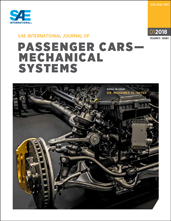Modeling of Friction Evolution and Assessment of Impacts on Vibration Excitation at the Pad-Disc Interface
- Event
- Content
- The frictional behaviour at the pad-disc interface has been simulated on the nanometer scale with the aid of the method of Movable Cellular Automata (MCA). The boundary conditions of the model were adjusted to experimental observations obtained by Transmission Electron Microscopy (TEM) showing that friction layers are mixtures of nanocrystalline iron oxide with a solid lubricant. A major benefit of this kind of modelling is that the impact of composition, pressure and velocity changes not only on the mean Coefficient of Friction (CoF), but also on CoF-fluctuations during the sliding simulation can be studied. Thus it has been shown that only under certain conditions, when a Mechanically Mixed Layer (MML) had formed, the CoF was stabilized with a minimum of fluctuations. On the other hand, when the MML was not formed, a stick-slip type of sliding occurred which was accompanied by damage of the interface layers. The remaining metal-on-metal or oxide-on-oxide contacts show higher CoF-values. Thus we conclude that the occurrence of high frequency vibrations during braking might be related to local degradation of the friction layers leading to unstable and locally differing CoF-values.
- Pages
- 9
- Citation
- Österle, W., Kloß, H., and Dmitriev, A., "Modeling of Friction Evolution and Assessment of Impacts on Vibration Excitation at the Pad-Disc Interface," SAE Int. J. Passeng. Cars - Mech. Syst. 1(1):1258-1266, 2009, https://doi.org/10.4271/2008-01-2582.
